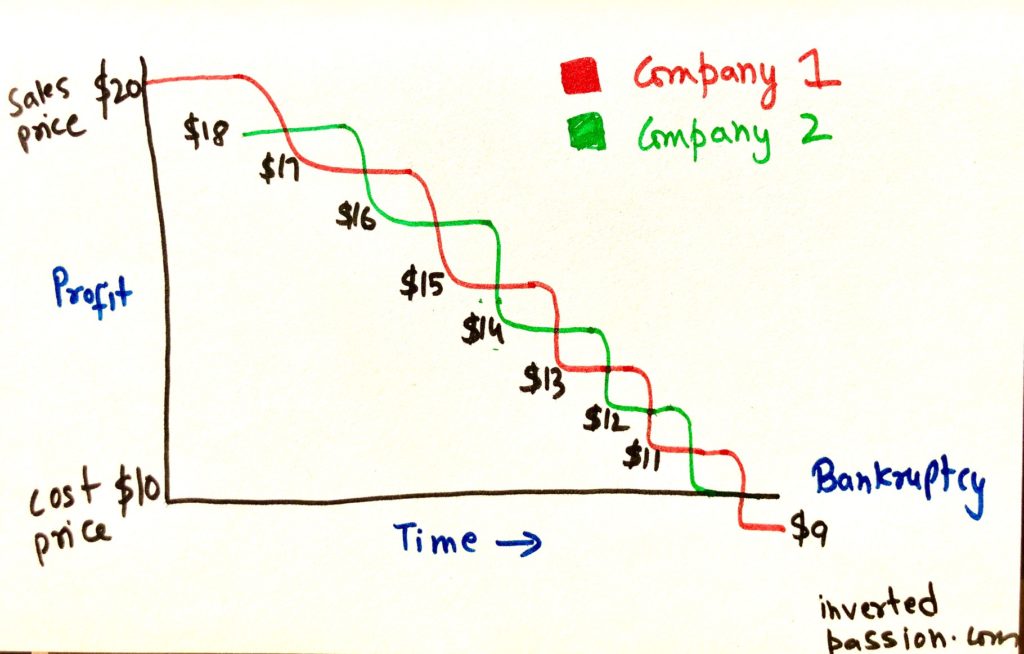Businesses don’t exist to make revenue, they exist to make profits. But the lure of revenue is hard to resist. It’s natural to admire the billions of dollars that big US retailers such as Guess, Macy’s, Radioshack and Toys R Us generate every year but it’s difficult to digest that they are in terrible shape because they’re not making any profit. These retailers are expected to close thousands of stores and fire many tens of thousands of employees. What went wrong?

You may have heard of this before, but a sure-shot way of making revenue is to offer $110 for $100. If you open this business, you’ll have no problem attracting customers and you’ll not even need to do any marketing (except when a new competitor springs up who offers $120 for $100). This example may seem worthy of nothing more than a chuckle but this business model is actually very common. Large eCommerce players in India (Flipkart, Snapdeal, and PayTM) grew by essentially handing out money to customers (in the form of discounts and cashbacks).
The management team at such companies isn’t stupid. Rather, it’s simply that such companies are locked in an unforgiving competitive environment which slowly eats away profit (leaving the revenue unaffected). In a head-on battle between competitors, it’s the customers (and not shareholders) who end up having a good time.
So, how do you make a profit?
Well, that’s what is non-trivial. It requires creativity in a business model to keep profits from dissolving in the environment. All obvious sources of profits get hunted soon by either large players or nimble startups. The business equivalent of Tolstoy’s famous quote “All happy families are alike; each unhappy family is unhappy in its own way” could very well be:
“All unprofitable companies are alike (engaged in the stupidity of head-on battle); each profitable company is profitable in its own way”.
How a company makes revenue is usually very obvious: they make some stuff that they sell for money. But, how a company makes a profit is usually mysterious.
For example
- How does a consumer finance company that gives a 0% interest loan (like Bajaj Finserv in India) make profit? It charges a percentage of sales from the retailer for giving them access to a customer they normally wouldn’t have, and they charge a processing fee from the customer, and they have customer purchase appliances on MRP (so customers lose out on a potential discount they could have had otherwise). By combining all these methods, they make healthy profit even as they advertise a 0% interest loan.
- How does truck rental company U-haul in a commodity market make a profit in spite of having cheaper rates than the competition? They make all their profit on accessories like boxes and other packaging material and none on the actual hauling services.
- Why does Costco, a big US retailer, is able to generate profits while other retailers are struggling? Because they charge a membership fee and that’s where Costco’s profits come from (and not through selling stuff). They’re a club, not a retailer.
Businesses do whatever elaborate things they do to generate that tiny, little profit from someplace that isn’t obvious. So a cinema hall from the outside looks like it is in the entertainment business, but on closer analysis, it is in the food and hospitality business. The entertainment side of things is to get a captive, hungry group of people who then you can charge an unfair amount of money to fund losses for their hypercompetitive movie screening business.
The next time you come across a business that has been there for quite a while, pause and think about how they make a profit. It is a fun exercise!
And also remember the famous quote by Peter Theil: “competition is for losers” because entrepreneurs in your industry think like Bezos who said: “your margin is my opportunity”.
Remember: To survive as a business, you need to make a profit. To make a profit, you need to avoid competition, and to avoid competition, you need to be creative.
This essay is part of my book on mental models for startup founders.
Join 200k followers
Follow @paraschopra